Mechanical Keyboard Switch Types and Benefits Explained
So, you're diving into the world of mechanical keyboards? Excellent choice! One of the first, and arguably most important, things you'll need to understand is the wide world of mechanical keyboard switches. These little guys are the heart and soul of your keyboard, determining the feel, sound, and overall typing experience.
Let’s break down the different types of switches and highlight some fantastic keyboards, available at TryMechKeys.com, that showcase the best of each category.
Understanding the Basics: What are Mechanical Keyboard Switches?
Unlike membrane keyboards that use a rubber dome to register keystrokes, mechanical keyboards use individual mechanical switches for each key. These switches consist of several parts, including:
- Stem: The part you press down on, which determines the switch's feel.
- Spring: Provides resistance and returns the key to its original position.
- Housing: Encloses the stem and spring.
- Contacts: Metal leaves that complete the circuit when the key is pressed, registering the keystroke.
The Three Main Types of Mechanical Keyboard Switches
Mechanical keyboard switches are generally categorized into three main types: Linear, Tactile, and Clicky. Let's explore each in detail:
1. Linear Switches: Smooth and Consistent
Linear switches offer a smooth, consistent keypress with no tactile feedback or audible click. They're favored by gamers for their fast actuation and smooth feel, allowing for rapid key presses.
- Characteristics: Smooth, consistent keypress; no tactile bump; quiet operation (relatively).
- Benefits: Fast actuation, ideal for gaming, smooth typing experience.
- Potential Drawbacks: Lack of tactile feedback can lead to typos for some users.
One excellent example of a keyboard featuring linear switches is the WOBKEY Rainy 75. This keyboard is a minimalist masterpiece designed for a premium typing experience.
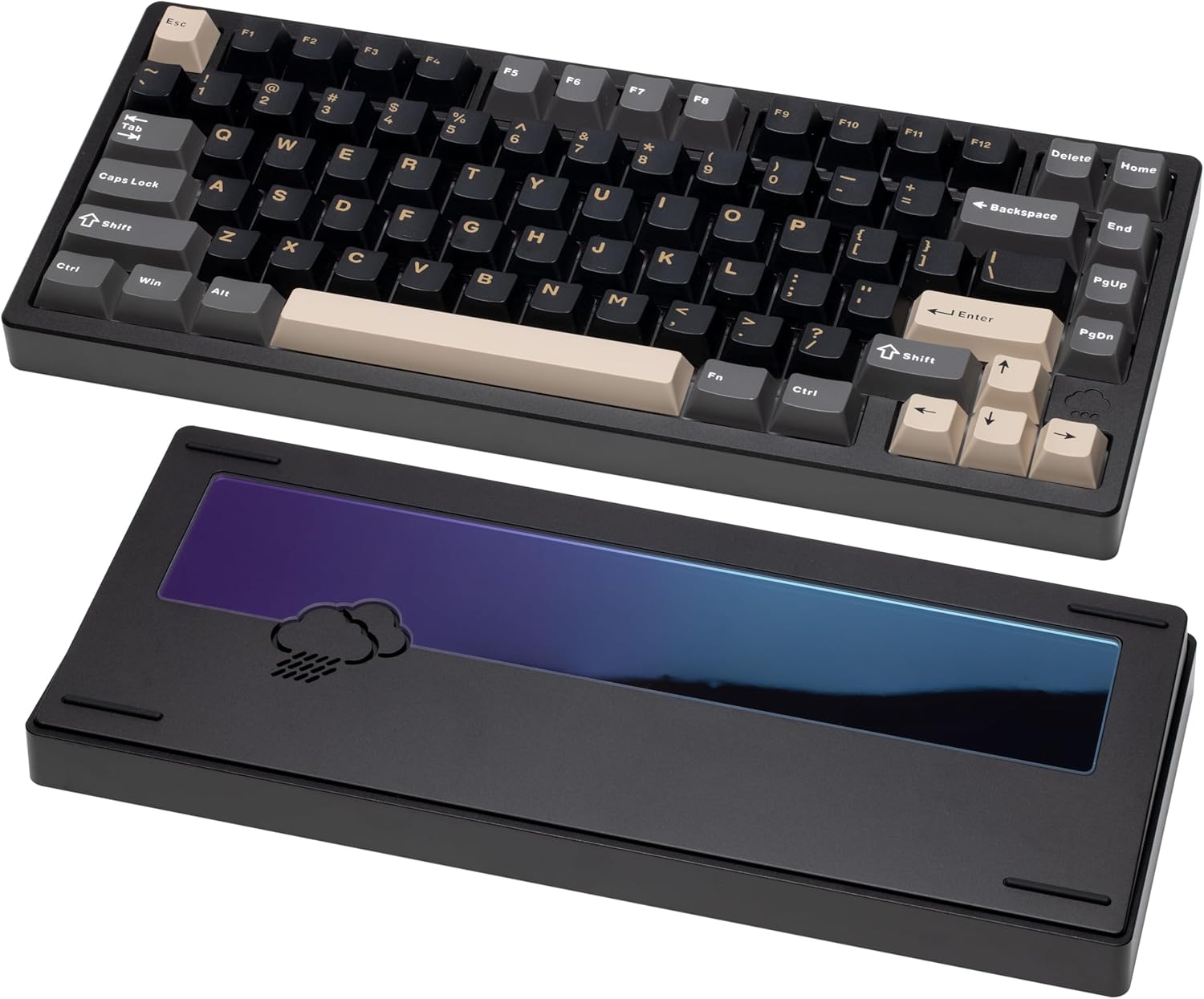
The Wobkey Rainy75 features a solid aluminum case, five-layer acoustic dampening, and a gasket-mounted design for soft, quiet keystrokes. It offers tri-mode connectivity—Bluetooth, 2.4GHz wireless, and USB-C wired—making it adaptable for any setup. With hot-swappable switches, south-facing RGB lighting, and high-quality keycaps, the Rainy75 delivers a refined, customizable experience ideal for both work and play.
2. Tactile Switches: The Bump That Tells You It's Working
Tactile switches provide a noticeable bump when the key is actuated, giving you feedback that the keypress has registered. They're a popular choice for typists who appreciate the confirmation of each keystroke.
- Characteristics: Tactile bump upon actuation; medium noise level.
- Benefits: Provides feedback, reduces typos, good for general typing.
- Potential Drawbacks: The tactile bump can feel fatiguing for some during extended use.
A great example of a keyboard with tactile switches is the EPOMAKER EA75. This 75% mechanical keyboard with 81 keys offers a satisfying typing experience thanks to its tactile switches and thoughtful design.
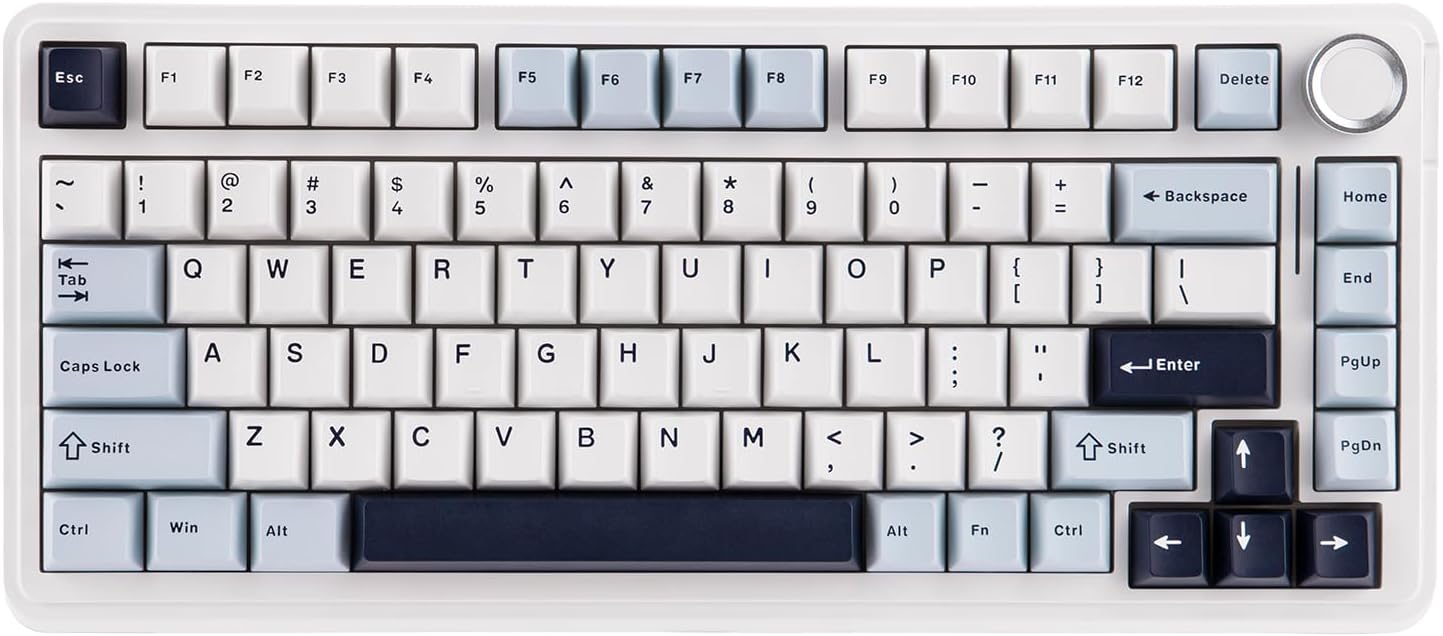
The EPOMAKER EA75 features tri-mode connectivity (wired, Bluetooth, and 2.4GHz) and a versatile rotary knob. It offers a smooth and quiet typing experience with factory-lubed switches, a gasket-mounted design, and multiple layers of sound dampening. With vibrant RGB lighting and hot-swappable compatibility, it's a great choice for both productivity and casual gaming.
3. Clicky Switches: Hear That Satisfaction
Clicky switches combine tactile feedback with an audible click sound. They offer the most pronounced feedback of all switch types and are loved by those who enjoy a distinct and satisfying typing experience.
- Characteristics: Tactile bump and audible click; loudest switch type.
- Benefits: Very pronounced feedback, satisfying typing experience.
- Potential Drawbacks: Can be too loud for office environments or shared spaces.
Consider the AULA F99 if you're looking for a keyboard with clicky switches. While switch options vary for this model, it's a fantastic board to explore clicky switches on.
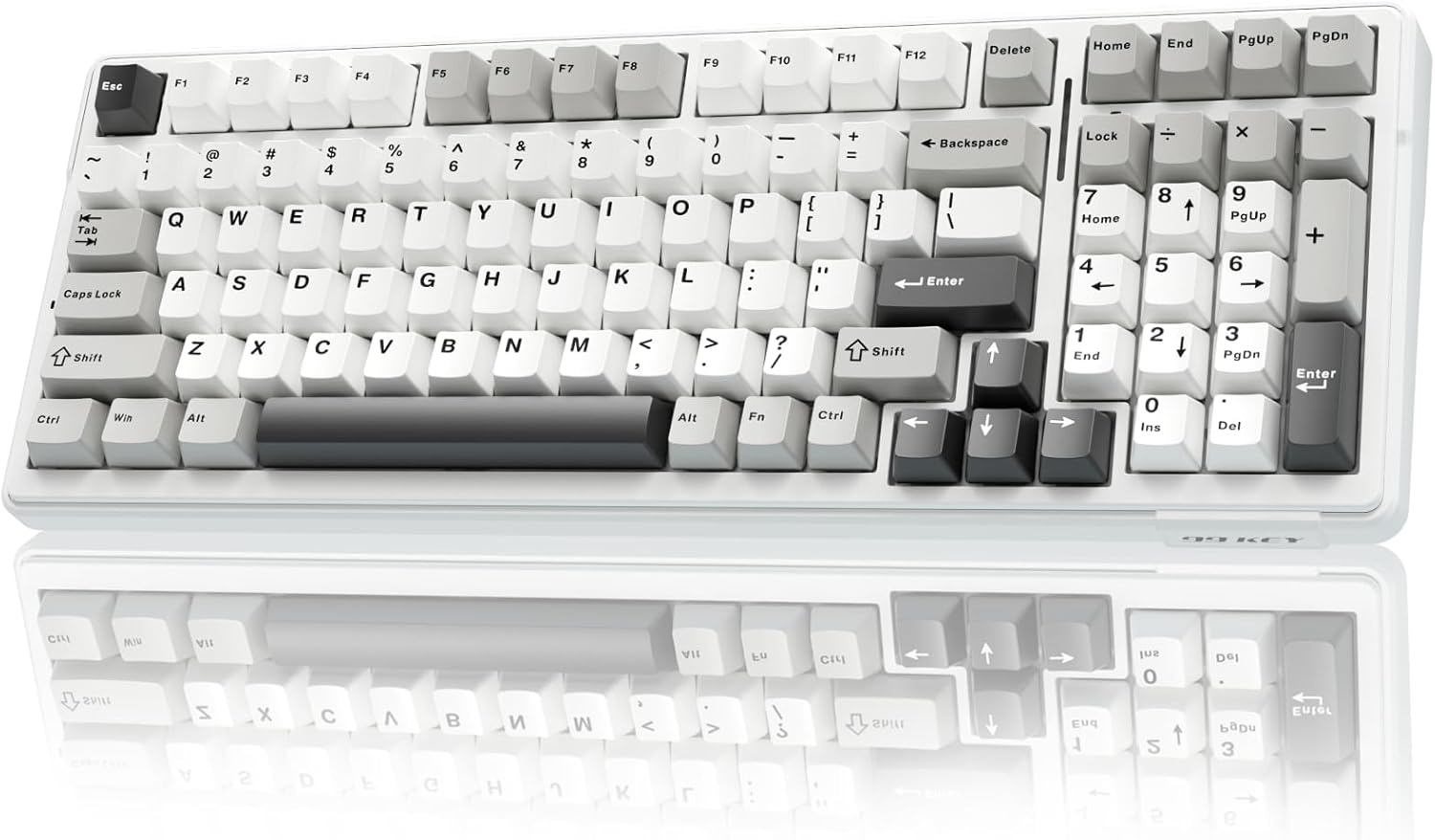
The AULA F99 is a compact 96% mechanical keyboard featuring tri-mode connectivity—Bluetooth 5.0, 2.4GHz wireless, and USB-C—paired with a powerful 8000mAh battery for extended use. Its gasket-mounted structure, five-layer sound dampening, and pre-lubed linear switches offer a soft, responsive typing experience with rich acoustics. Hot-swappable switch sockets, vibrant per-key RGB lighting, and customizable macros make it a versatile choice for both typists and gamers.
Beyond the Basics: Other Factors to Consider
Beyond the three main types, several other factors influence the feel and performance of mechanical keyboard switches:
- Actuation Force: The amount of force required to press the key. Lower actuation force results in a lighter, faster feel.
- Travel Distance: The distance the key travels before actuating. Shorter travel distance can lead to faster actuation.
- Switch Brand: Different brands (e.g., Cherry MX, Gateron, Kailh) have their own unique characteristics and qualities.
- Hot-Swappable Keyboards: These keyboards allow you to easily replace switches without soldering, making it easy to experiment and find your perfect switch.
Hot-Swappable Keyboards: Experimentation is Key!
One of the best developments in the mechanical keyboard world is the advent of hot-swappable keyboards. These boards allow you to easily remove and replace your switches without any soldering required. This opens up a world of possibilities, allowing you to experiment with different switch types and brands to find the perfect feel for your typing style.
The Keychron K2 HE is an excellent example of a high-performance keyboard that uses magnetic switches and is hot-swappable.
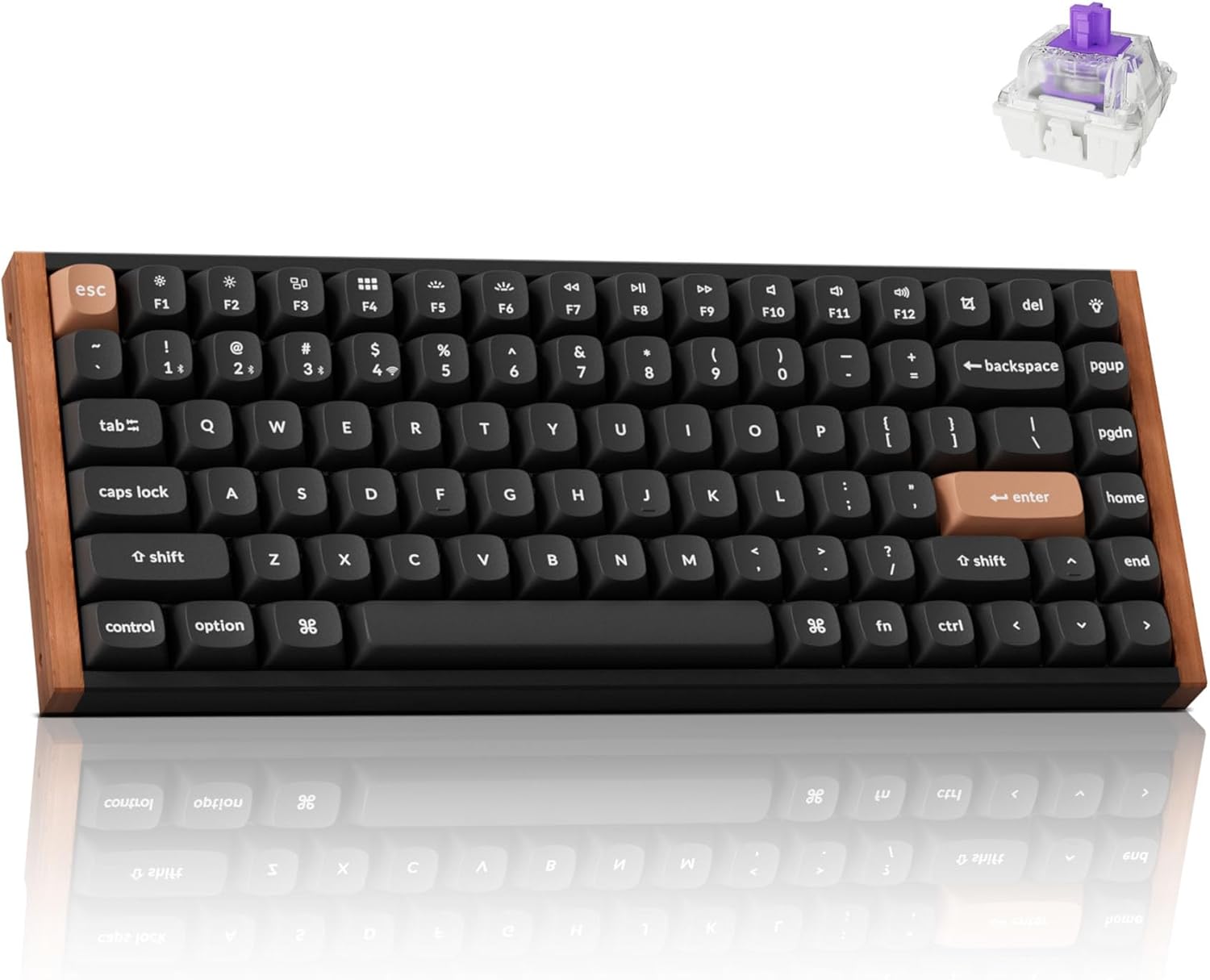
The Keychron K2 HE is a high-performance 75% mechanical keyboard featuring Hall-Effect Gateron double-rail magnetic switches, allowing for ultra-responsive input and customizable actuation as low as 0.1 mm. It supports 2.4GHz wireless (with a 1000Hz polling rate), Bluetooth 5.2, and USB-C connectivity, along with QMK/VIA programmability and hot-swappability for magnetic switches. With a sleek aluminum and wood frame, gasket-mounted design, double-shot PBT keycaps, and a long-lasting 4000mAh battery, it's built for both serious gaming and refined typing.
Another great option is the Akko 5075B Plus Air, a Mac-themed keyboard that combines aesthetics with functionality.
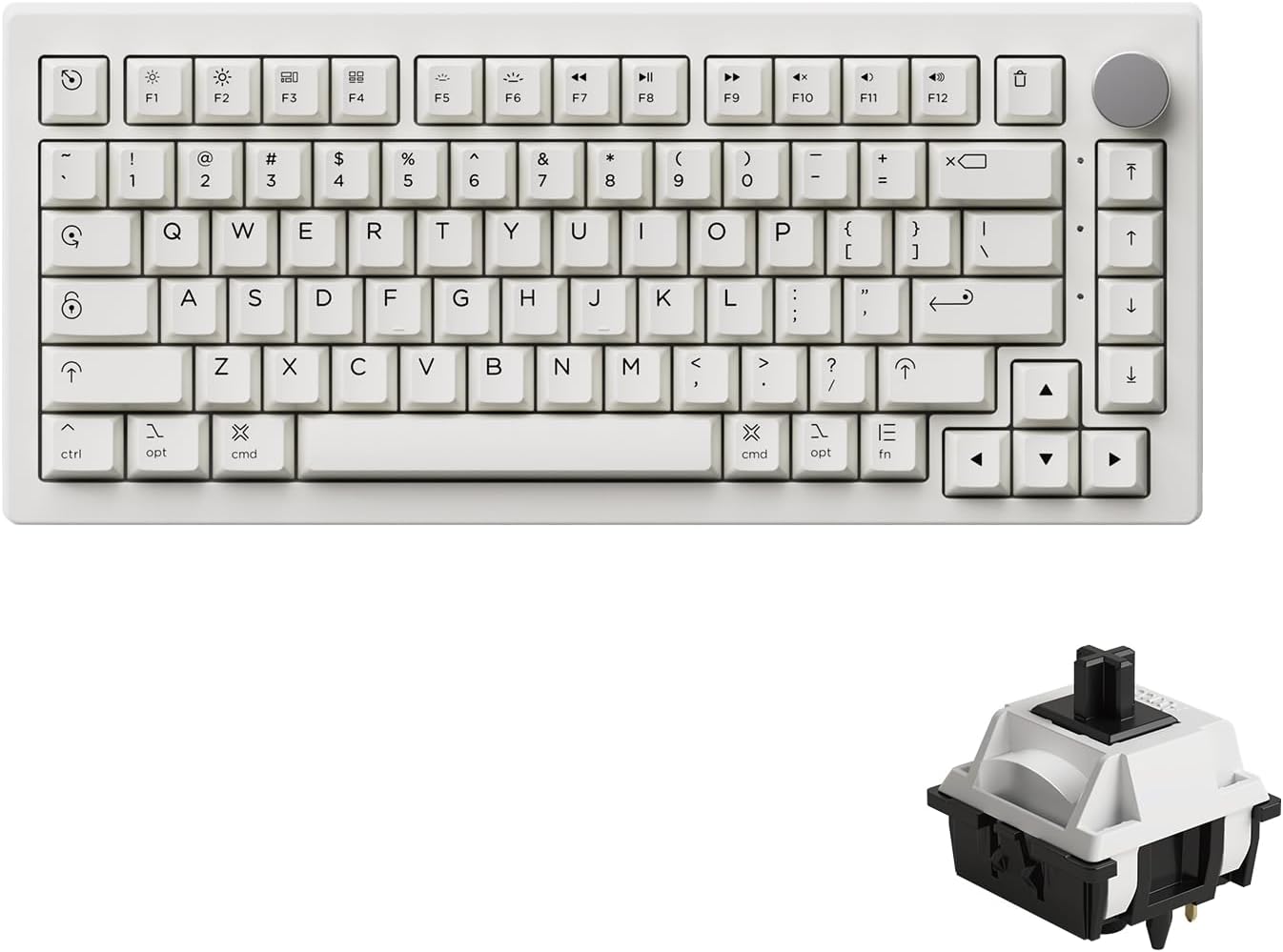
The Akko 5075B Plus Air is a Mac-themed, 75% wireless mechanical keyboard featuring hot-swappable sockets and durable PBT dye-sub keycaps. It supports tri-mode connectivity (Bluetooth 5.0, 2.4GHz, and USB-C) and includes a programmable RGB backlight with per-key effects. A customizable knob lets you adjust brightness, volume, or other functions using the Akko Cloud Driver.
Choosing the Right Switch for You
Ultimately, the best mechanical keyboard switch is a matter of personal preference. Consider the following when making your decision:
- Typing Style: Do you prefer a smooth, fast feel, or a more tactile and deliberate experience?
- Gaming Needs: Are you looking for fast actuation and responsiveness for competitive gaming?
- Environment: Will you be using the keyboard in a shared space where noise is a concern?
- Budget: Prices can vary between switch types and brands.
Visual Aids and Further Exploration
To further enhance your understanding, consider exploring visual aids like switch charts that compare actuation force, travel distance, and sound levels. Also, check out video demos showcasing the sound and feel of different switch types.
Conclusion
Choosing the right mechanical keyboard switch can significantly enhance your typing and gaming experience. Whether you prefer the smooth feel of linear switches, the tactile feedback of tactile switches, or the satisfying click of clicky switches, there's a perfect switch out there for you. Explore the selection at TryMechKeys.com and start your mechanical keyboard journey today!
What are your favorite switch types? Share your thoughts and experiences in the comments below!
Mechanical Keyboard Starter Guide
Ever wanted to learn about or build your own mechanical keyboard? This guide will show you everything you need to know.
Learn More